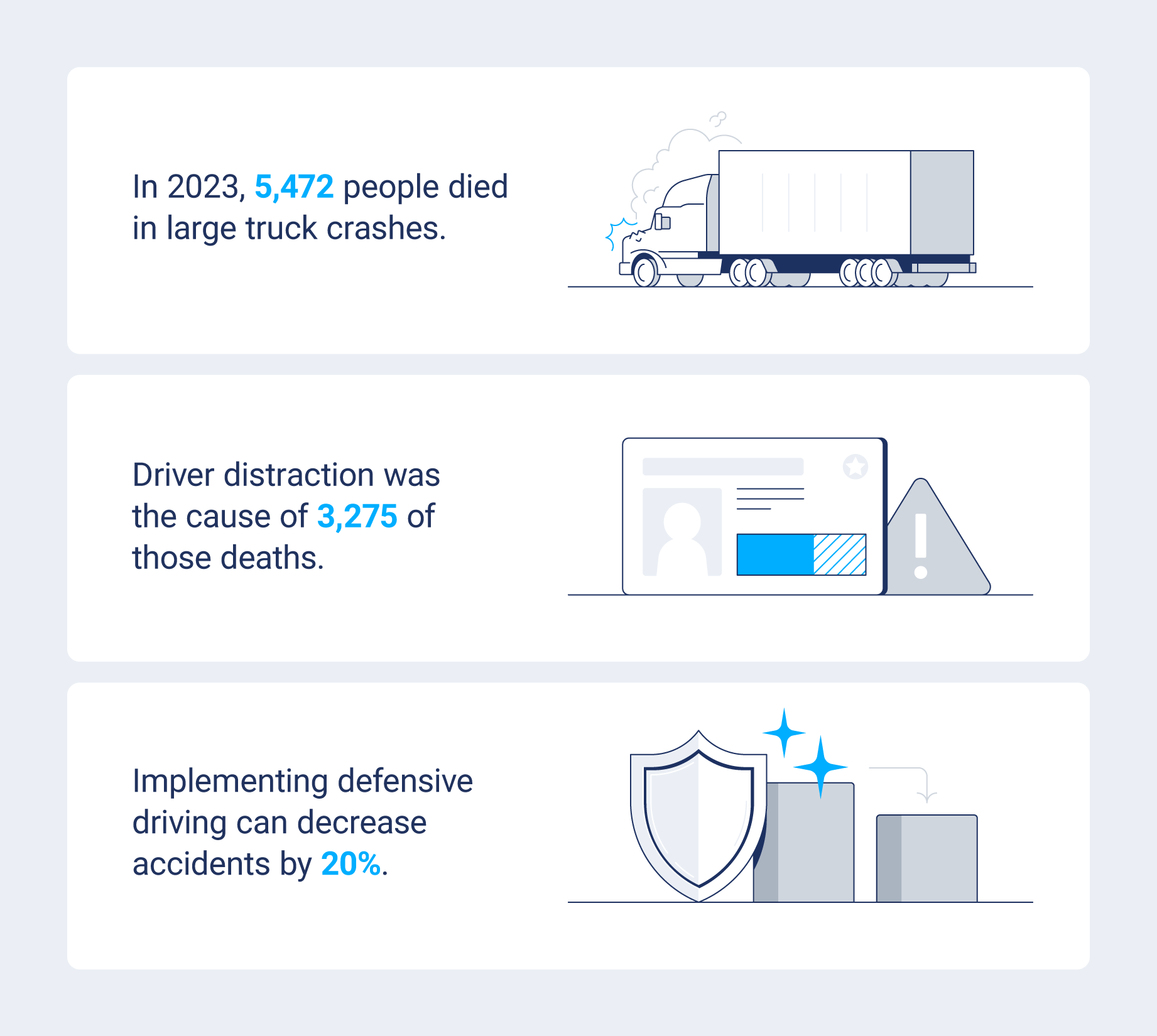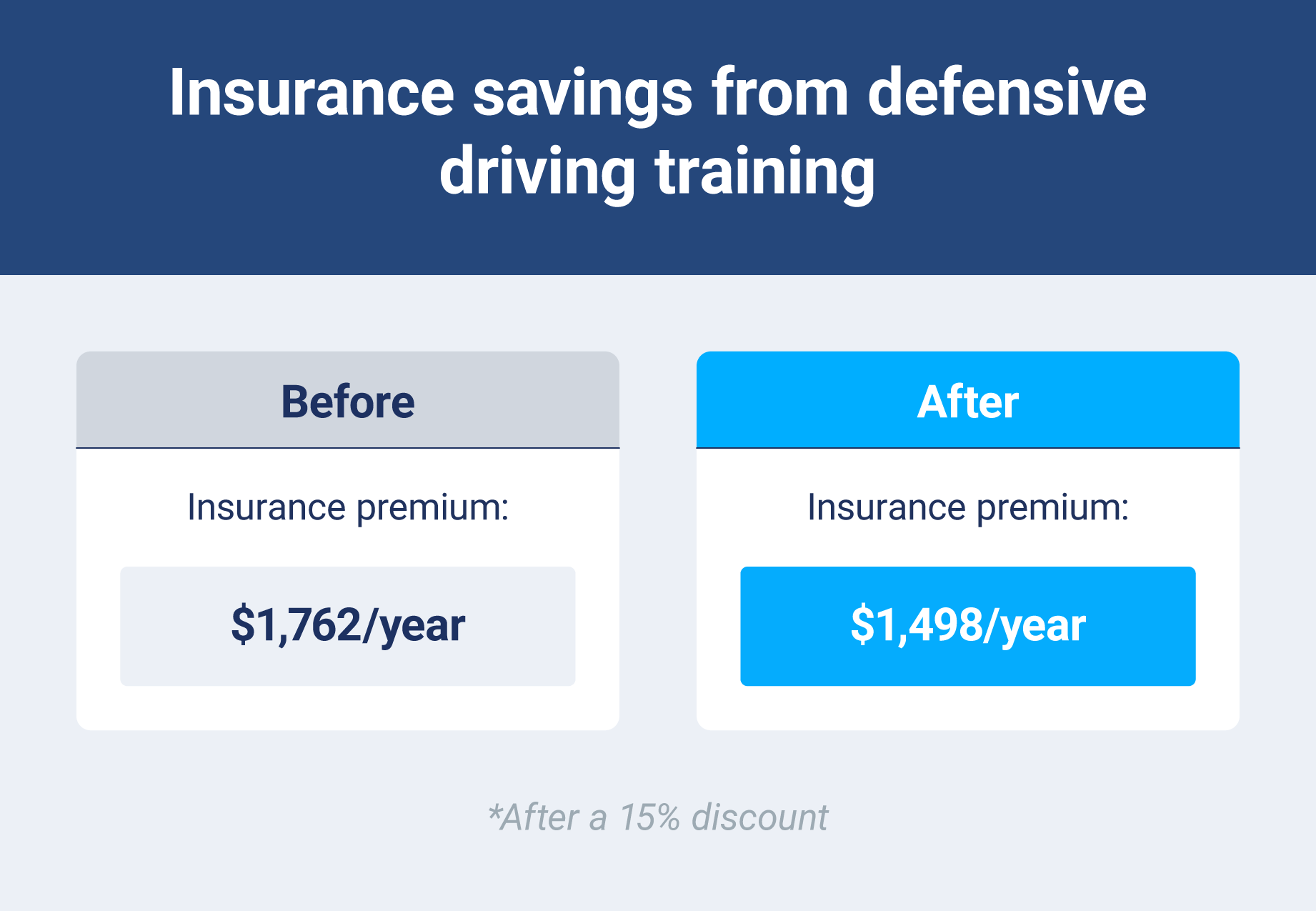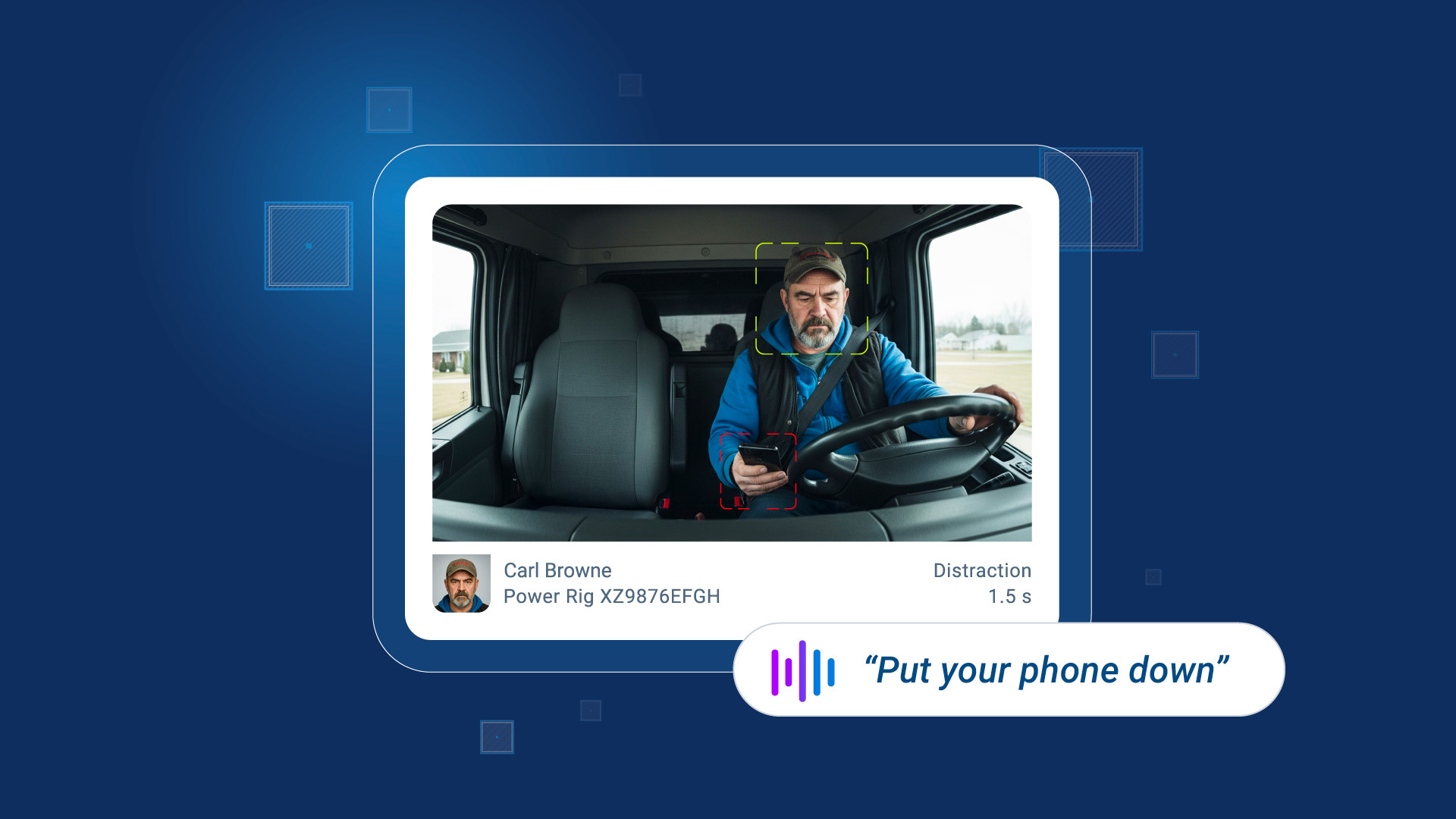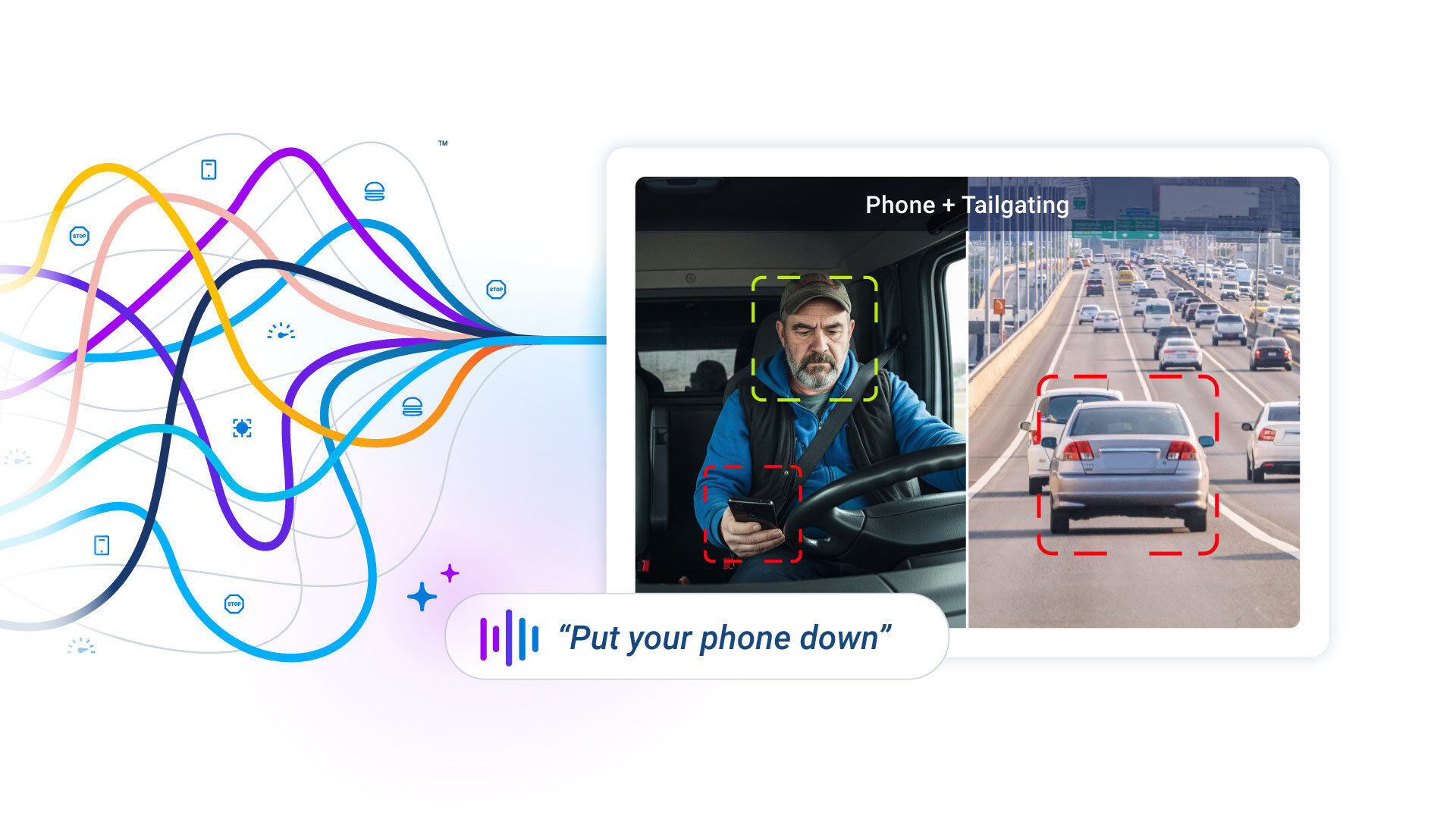What is defensive driving? Techniques for safer fleets
Fleet managers looking to reduce accident rates and insurance costs should implement defensive driving programs to improve driver safety and operational efficiency.
By Geotab Team
Oct 27, 2025

Key Insights
- Defensive driving is a proactive safety approach that reduces commercial fleet accident rates through increased awareness.
- Comprehensive defensive driving programs deliver measurable ROI through reduced insurance premiums, decreased vehicle downtime and lower accident-related expenses.
- Modern fleet safety technology further improves defensive driving efficiency by providing real-time behavior monitoring, immediate feedback and predictive analysis that helps maintain consistent safety practices.
Truck driving is one of the most dangerous occupations, sitting up there with hunting, forestry and piloting. In 2023, 5,472 people were killed in accidents involving large trucks, with over 150,000 more injured. These stark figures underscore why defensive driving is so important.
For fleet operators, defensive driving means measurable business impacts. By implementing comprehensive training and teaching drivers how to avoid aggressive driving, fleets can reduce accident rates and improve overall safety. Learn more about what defensive driving is, how you can add it to your fleet training and the benefits you can expect to see below.
What is defensive driving?
Defensive driving is a set of driving techniques that teaches drivers to stay alert to road hazards, anticipate other drivers’ actions and adapt to weather conditions, all to significantly reduce the risk of an accident.
The ultimate goal of defensive driving is to keep your drivers and everyone else on the road safe. That means always being alert and careful, as drivers can never be certain what other drivers are going to do. Take a closer look at the key defensive driving principles below.

Benefits of defensive driving
Defensive driving means making the road safer for everyone. Incorporating defensive driving principles into your fleet operations means:
- Fewer collisions and lower risks
- Reduced costs
- Stronger safety culture
This proactive defensive driving strategy goes beyond abiding by basic traffic laws. It means creating a fleet safety program that results in measurable improvements in your organization’s overall performance by keeping everyone on the road a little bit safer.
Fewer collisions and lower risk
The biggest benefit of defensive driving is that your drivers can better anticipate potential hazards and leave time to react to trouble, massively reducing collision rates.
Remember, the core driving principles focus on maintaining a safe following distance, maintaining visibility and preparing for any unexpected actions from other drivers, pedestrians or cyclists. Teaching this strategy across your fleet means your drivers are prepared and have a significant buffer against common accidents.
Reduced costs
Defensive driving can do more than reduce your fleet’s collision count. It means cost-savings across the board, with decreased payments for:
- Accident-related expenses
- Insurance premiums
- Vehicle downtime
Many insurance companies give discounts for defensive driving courses, offering 5% to 20% off car insurance premiums. The compound effect of these savings will pay for defensive driving training investments multiple times over.
A stronger safety culture
Promoting a company-wide defensive driving culture means creating a safe environment that extends beyond the individual driver. When defensive driving becomes the foundation of fleet operations, it builds safer habits and encourages peer accountability, creating a ripple effect that can lead to increased driver retention and a better company reputation.

Defensive driving techniques
What techniques should your fleet learn to keep the road safer for themselves and everyone else? Read on to learn the most common tips for defensive driving.
Keep looking ahead
Drivers shouldn’t just look at the area immediately in front of them. Instead, eyes should be focused as far ahead as possible. This makes it easier to spot hazards on the road and improves response time. It also makes it much easier for drivers to maintain at least one car length for every 10 miles per hour of speed, a major reaction time booster.
Check your mirrors
Drivers should continuously check their mirrors as they drive to take in as much information as possible. That means if the car in front of you starts breaking, you don’t wholly focus on that vehicle. If you fixate only on that car, you might not notice another vehicle coming into your lane, resulting in an accident.
Stay alert
Drowsy driving killed 633 people in 2023. Left unaddressed, sleepy driving can lead to dangerous behaviors like drifting out of your lane, not braking when needed and even crashing. Following Hours of Service (HOS) rules is essential not just for compliance but for preventing dangerous driver fatigue.
Take breaks as needed
1.16 million U.S. drivers have admitted to falling asleep behind the wheel. Regular breaks are important, as drivers need strategic rest periods to do their jobs safely.
That means pulling off to a safe location like a rest stop or parking lot for a 15-to-20-minute power nap or getting out to stretch. Encourage drivers to walk around every two hours, and regularly swap drivers on long hauls. Even brief breaks can help reset focus and combat fatigue.
Avoid distractions
Keeping your eyes on the road means not looking at your phone or other distractions in the vehicle. Driver distraction was the cause of 3,275 deaths in 2023. Keep your phone and other objects away from your front seat to avoid temptations.
Be prepared for anything
Keep weather and road conditions top of mind. Driving at the posted speed limit during a sunny day is fine, but if it's snowing or raining, that same speed becomes risky. Keep an eye on traffic and adjust accordingly. Always be aware of areas along the road in case an animal or pedestrian tries to cross your path.
It’s also important to have an emergency plan. Think about how you can avoid and prepare for potentially life-threatening emergencies. It can be as simple as keeping space around your vehicle in case you need to swerve to avoid a hazard.
Maintain a safe distance
There are a lot of things drivers can’t control on the road, but one of the things you can manage is the distance between you and the car in front of you.
Large trucks need more time and space to stop. For example, a passenger vehicle weighing 4,000 lbs and driving 65 mph takes 316 feet to stop. However, a tractor-trailer weighing 80,000 lbs and driving at 65 mph will take 525 feet to stop.
Maintain a safe following distance by taking certain factors into account, including:
- The type of vehicle in front of you
- Your speed
- Weather conditions
A good rule of thumb is maintaining a three-second gap. This should give you enough time to react to potential road hazards. Find this number by picking a fixed object on the road, and once the car in front of you passes it, start counting. If you pass that same object in three seconds, you’re maintaining the correct following distance.
Control your speed
You don’t need to keep up with speeders. Stick to the speed limit, and move over to let faster cars pass. Slower traffic should always stay to the right, unless there are signs that say otherwise. And remember: Speeding doesn’t actually save you that much time, so ease off the gas.
Signal early
Help other drivers understand your attentiveness by signaling early and clearly. Only change lanes when you have space. The Missouri Department of Revenue recommends signaling at least 100 feet before making your move for maximum visibility.
Obey traffic laws
Buckle up, pay attention to speed signs, slow down for yellow lights and stop for red. Beyond basic traffic laws, fleet managers need to keep drivers updated on evolving traffic regulations and compliance issues to both avoid tickets and build a stronger safety culture.
Invest in fleet safety tools
Modern fleet safety tools support and improve defensive driving practices with real-time driver behavior monitoring, coaching and analytics. Advanced monitoring systems can identify risky behaviors like harsh braking, rapid acceleration and excessive speeding and provide immediate feedback to help drivers improve.
Geotab’s comprehensive fleet driver safety platform combines GPS tracking, driver behavior monitoring and predictive analytics to help you bring your defensive driver program to the next level.
Incorporate defensive driving into your fleet strategy
Defensive driving is about making the road safer for your fleet and other drivers. By incorporating the right training, techniques and driving strategies, you can reduce your organization’s accident rates, insurance premiums and vehicle downtime, while building a company reputation for safety excellence.
Learn more about your fleet’s safety performance with Geotab's fleet safety solutions.
Subscribe to get industry tips and insights
Frequently Asked Questions
Defensive driving focuses on being proactive and anticipating hazards and avoiding accidents. Offensive driving means making risky decisions like speeding, tailgating and taking other unnecessary risks.
Defensive driving examples include maintaining a safe following distance, checking blind spots before changing lanes, reducing speed in poor weather and avoiding distractions like cell phone use.
The three C’s are care, caution and courtesy. Care means staying focused and following the rules of the road. Caution is anticipating hazards and giving yourself time to react. Courtesy is respecting other drivers by signaling, yielding and avoiding aggressive moves. Together, they make driving safer for everyone.
A defensive driving course is an education program that teaches drivers how to anticipate hazards, avoid accidents and develop safer driving habits.
Defensive driving courses typically cost between $20 and $100, depending on the provider, delivery method (online vs. classroom) and state requirements.
Yes, defensive driving can reduce vehicle maintenance costs by reducing wear and tear and cutting back on repair costs.
The Geotab Team write about company news.
Table of Contents
Subscribe to get industry tips and insights
Related posts

How AI dash cams help fleets tackle distracted driving and reduce collisions
October 23, 2025
4 minute read

How Geotab’s Predictive Safety Model helps fleets prevent collisions before they happen
October 17, 2025
2 minute read

From data to foresight: How VisionTrack is transforming fleet safety
October 14, 2025
2 minute read

A Clearer Picture: How FleetCam Empowers Fleets to See the Full Story
October 7, 2025
2 minute read

How AI dash cams for fleets stop distracted driving and deliver true safety gains
September 15, 2025
5 minute read
